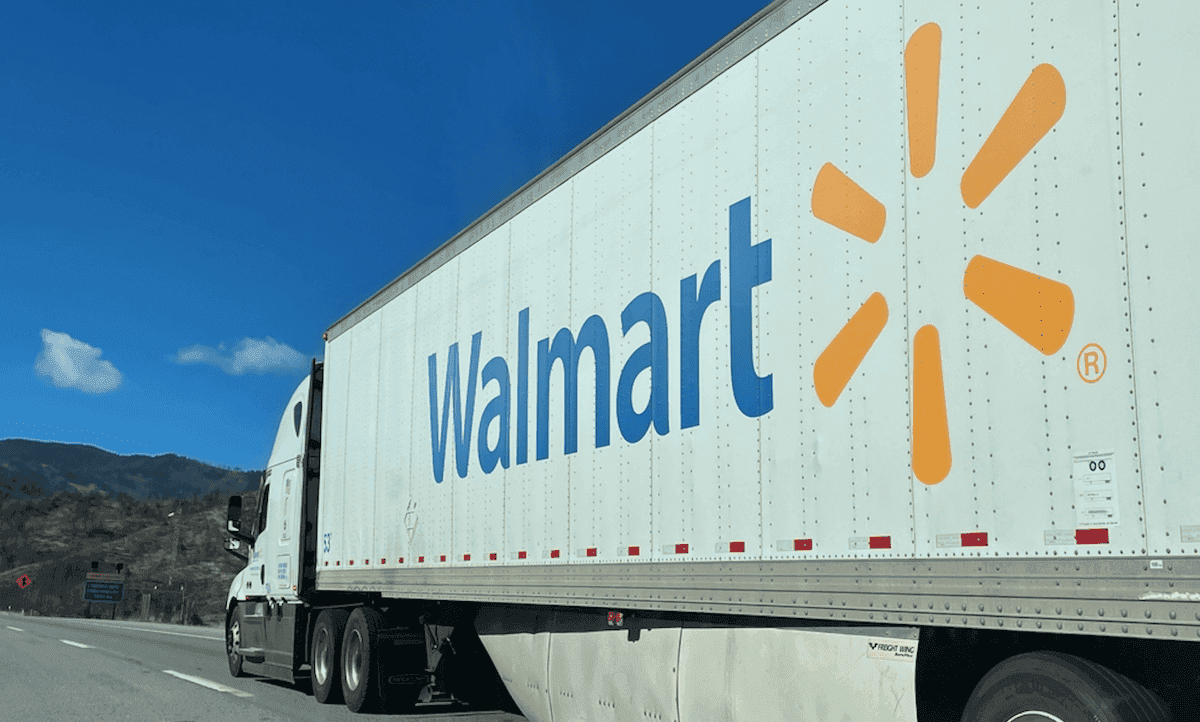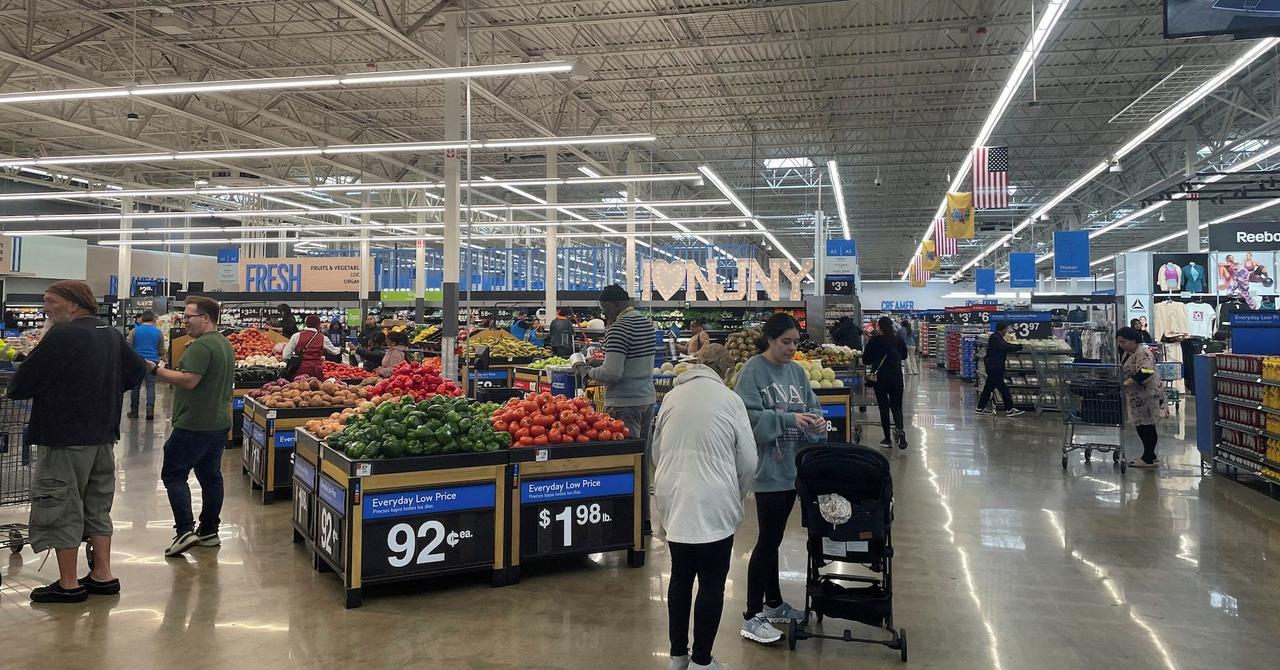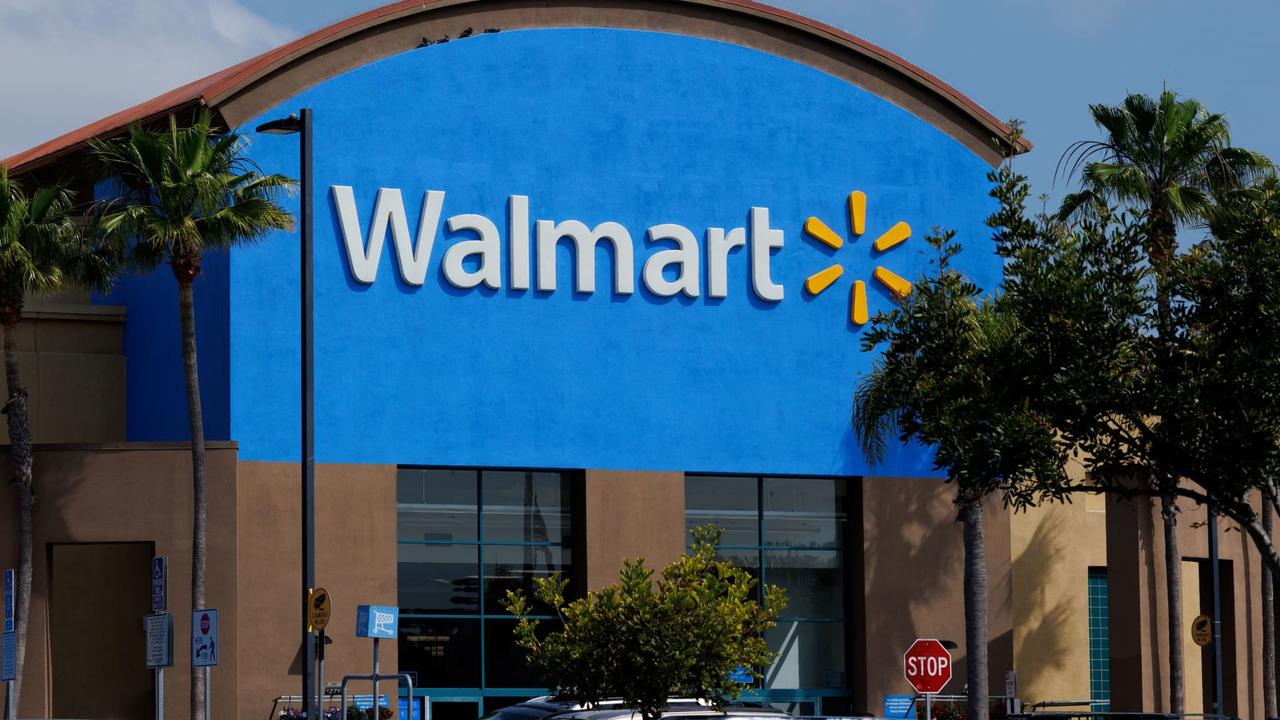Walmart Accelerates Automation with Sensor Technology and Drone Delivery
2 Sources
2 Sources
[1]
Walmart steps up automation with sensors tracking store shipments
Walmart plans to use sensors to track the location and condition of 90mn pallets of groceries it ships to stores each year, further cutting manual tasks as the largest US private sector employer automates more operations. The retail giant will attach the sensors to the pallets at its entire 4,600-store US chain by the end of 2026, Walmart and technology vendor Wiliot said on Thursday. Among the shipments to be tracked are perishables, whose temperature and condition will be monitored by the sensors. The move will reduce routine work at Walmart, which has been able to increase revenues by $150bn in the past five years without taking on more workers. The Arkansas-based company employs 2.1mn people, including 1.6mn in the US. The investment in labour-saving sensors is likely to strengthen Walmart's position as a low-cost food retailer, even as rivals such as Costco and Aldi open more US stores. Walmart accounts for more than a fifth of groceries sold in America, according to Numerator, a market research firm. Greg Cathey, Walmart's senior vice-president of transformation and innovation, said the technology would tackle "one of the hardest problems in retail -- knowing exactly what we own and where it is at any given moment". The retailer is using sensors from Wiliot, a supply chain technology company based in San Diego. The devices -- made with microchips 0.7 square millimetres in size -- are embedded in shipping labels stuck to the shrink-wrapped bundles of items trucked from warehouses to stores, said Julien Bellanger, Wiliot president. The sensors use Bluetooth connections to send data about the whereabouts, condition, dwell time and temperature of pallets that may contain packaged dry goods or fresh produce. Walmart started deploying Wiliot's sensors at a Texas warehouse in 2023 and now uses them in 500 locations. The full deployment will reach its US store network as well as 40 distribution centres. Walmart previously relied on manual scanning and checks by employees, sometimes with a pen and paper, a spokesperson said. Walmart has invested heavily in automating operations, especially in its supply chain. It has also been deploying artificial intelligence in tasks ranging from loading trucks to assisting shoppers. The sensor technology "provides a new stream of real-time data that will feed directly into our AI systems" to achieve "precision decision-making", it said. Walmart has said it plans to keep headcount roughly steady. Asked how the technology could affect staffing, the company said it was focused on "removing monotonous tasks from as many roles as possible". Walmart and Wiliot declined to disclose the financial terms of their arrangement. The retailer's shares have gained almost 27 per cent in the past year, valuing the company at just over $800bn.
[2]
How Amazon and Walmart Are Rewiring Themselves to Reshape Retail | PYMNTS.com
By completing this form, you agree to receive marketing communications from PYMNTS and to the sharing of your information with our sponsor, if applicable, in accordance with our Privacy Policy and Terms and Conditions. And the direction of travel across these retail ecosystems is unmistakable: toward a more digitized, sensor-aware and automated retail model, one that blends the physical presence of stores with data-driven logistics in ways that were barely imaginable a decade ago. A cluster of fresh announcements this week reveal that Walmart's ongoing bet is that by transforming its logistics network of pallets, trucks, drones and store back rooms, it can make the physical proximity of its stores the ultimate convenience weapon. Amazon's own bet is that by embedding commerce into voice-driven devices and subscription bundles, it can keep customers within its digital realm. Grocery, of course, remains a perennial battleground. This is not the splashy robotics race of the mid-2010s. It is a quieter, more pervasive shift in which sensors, artificial intelligence, supply-chain telemetry and even drone networks are rewriting the operating code of a key consumer sector. Both approaches to retail's reinvention rely on automation, but with different emphases: for Walmart, it is about physical movement of goods; for Amazon, about digital engagement and personalized recommendations. For Walmart, what plays out next could reveal whether physical scale, supercharged by sensors and drones, can fend off a software-first rival. For Amazon, the road ahead may battle test its ability to leverage artificial intelligence (AI), devices and convenience to embed itself even more deeply in consumers' daily lives. One of the most revealing initiatives surfaced Thursday (Oct. 2) with the news that Walmart will use networked sensors to monitor the location and condition of the 90 million pallets of groceries it ships to its stores each year. The sensors, developed in collaboration with Israeli IoT specialist Wiliot, transmit real-time data on temperature, humidity and movement. Per the release, the rollout will cover 4,600 Walmart Supercenters, Neighborhood Markets and over 40 distribution centers, generating high-resolution supply chain data that feeds into Walmart's AI systems. In effect, pallets and cases become networked assets that report their own status. The shift reflects a broader truth about automation in retail logistics: it often begins not with robots in aisles, but with invisible layers of sensing and data that orchestrate existing assets more efficiently. Equally striking is Walmart's plan to offer drone delivery to "most of the areas where it operates," as revealed at the UP Summit. After years of pilot projects, the company appears ready to move past demonstration mode. A drone-enabled last-mile network promises to compress delivery windows and reduce reliance on both store staff and third-party carriers. The timing is not coincidental. Walmart's logistics backbone, already one of the largest private distribution networks in the U.S., is being rewired by the very sensor systems described above. When temperature-sensitive goods can be tracked with high confidence, the risk of entrusting them to autonomous aerial vehicles diminishes. Drone delivery in this way sits atop a foundation of digital visibility that was absent in earlier experiments. No analysis of Walmart's automation strategy is complete without reference to Amazon. On the very day that Walmart's sensor partnership with Wiliot was publicized, Amazon announced "Amazon Grocery," a new private-label food brand promising quality products at everyday low prices -- a clear shot at Walmart's grocery stronghold at a time when consumers are increasingly price-sensitive. The PYMNTS Intelligence report "Why Paycheck-to-Paycheck Consumers Can't Weather a $2,000 Shock" found that in August, 68% of consumers in the United States were living paycheck to paycheck. It's "a number that leaves little room for error when an unexpected bill arrives," PYMNTS reported Sept. 23. Where the two giants converge is in automation as an enabler of margin expansion and customer experience. Both see the future of grocery, the largest retail category by far, as hinging on how cheaply and quickly fresh goods can be moved, tracked and delivered. Also in parallel, Amazon unveiled upgraded Echo devices with enhanced Alexa capabilities, signaling its ambition to deepen the digital layer that mediates shopping. Amazon continues to fuse its hardware, software and retail operations into a tightly integrated ecosystem, resulting in a model that rewards consumers for staying within its walled garden For now, observers must watch the horizon for further escalations, particularly in drone scale, brand loyalty in food and AI-driven labor redesign.
Share
Share
Copy Link
Walmart is implementing advanced sensor technology to track shipments and expanding drone delivery capabilities, signaling a significant shift in retail automation. This move aims to enhance efficiency and maintain Walmart's competitive edge in the grocery market.

Walmart's Sensor-Driven Supply Chain Revolution
Walmart, the largest private sector employer in the United States, is taking a significant leap in retail automation by implementing advanced sensor technology to track its vast network of grocery shipments. The retail giant plans to attach sensors to 90 million pallets of groceries annually, covering its entire 4,600-store US chain by the end of 2026
1
.The sensors, developed in collaboration with Wiliot, a San Diego-based supply chain technology company, are embedded in shipping labels and use Bluetooth connections to transmit real-time data about the location, condition, dwell time, and temperature of pallets
1
. This technology will replace manual scanning and checks, significantly reducing routine work and enhancing operational efficiency.Automation's Impact on Walmart's Workforce and Market Position
Walmart's investment in labor-saving sensors is expected to strengthen its position as a low-cost food retailer. The company has managed to increase revenues by $150 billion in the past five years without taking on more workers, maintaining a workforce of 2.1 million people, including 1.6 million in the US
1
.Greg Cathey, Walmart's senior vice-president of transformation and innovation, emphasized that this technology addresses one of retail's most challenging problems: knowing exactly what the company owns and where it is at any given moment
1
.Expanding Automation Beyond Sensors: Drone Delivery Network
In addition to sensor technology, Walmart is making strides in expanding its drone delivery capabilities. The company plans to offer drone delivery to "most of the areas where it operates," as revealed at the UP Summit
2
. This move signifies Walmart's readiness to move beyond pilot projects and integrate drone delivery into its mainstream operations.The timing of this expansion aligns with the implementation of the sensor-based logistics system. The high-confidence tracking of temperature-sensitive goods reduces the risks associated with entrusting deliveries to autonomous aerial vehicles
2
.Related Stories
The Broader Context: Retail's Digital Transformation
Walmart's automation efforts are part of a larger trend in the retail industry, where major players are leveraging technology to reshape their operations. The direction is clear: towards a more digitized, sensor-aware, and automated retail model that blends physical store presence with data-driven logistics
2
.While Walmart focuses on transforming its logistics network to make physical proximity its ultimate convenience weapon, competitors like Amazon are taking a different approach. Amazon is embedding commerce into voice-driven devices and subscription bundles, aiming to keep customers within its digital realm
2
.Implications for the Future of Retail
The contrasting strategies of Walmart and Amazon highlight two potential paths for the future of retail. Walmart's approach leverages its physical scale, supercharged by sensors and drones, to fend off software-first rivals. Amazon, on the other hand, is testing its ability to use AI, devices, and convenience to embed itself more deeply in consumers' daily lives
2
.As these retail giants continue to innovate and automate, the industry watches closely to see which approach will prove more successful in reshaping the retail landscape and capturing consumer loyalty in an increasingly competitive market.
References
Summarized by
Navi
Related Stories
Walmart Explores $200 Million Investment in Autonomous Forklifts to Enhance Warehouse Automation
26 Jul 2024

Walmart Unveils AI Super Agents to Revolutionize E-commerce and Operations
24 Jul 2025•Technology

Walmart's AI Super Agents and Digital Twins Revolutionize Retail Operations
30 Aug 2025•Technology

Recent Highlights
1
Google launches Gemini 3 Flash as default AI model, delivering speed with Pro-grade reasoning
Technology

2
OpenAI launches GPT Image 1.5 as AI image generator war with Google intensifies
Technology

3
OpenAI launches ChatGPT app store, opening doors for third-party developers to build AI-powered apps
Technology





